One of the rarest types of moths in the world is purple. The United States is one of the countries where purple moths are still present in high numbers.
Moths may be typically partly purple. This color might also be representative of the caterpillar stages, as well as purple, which is specific in all life cycles for some species.
Here are some of the most common purple moths around the world.
Table of Contents
1. Southern Purple Mint Moth
Southern Purple Mint Months (Pyrausta laticlavia) is a native species in The United States.
It inhabits a wide Eastern territory from the Northern states down to Florida.
This moth has partial purple coloring which is contrasted by yellow spots on the wings.
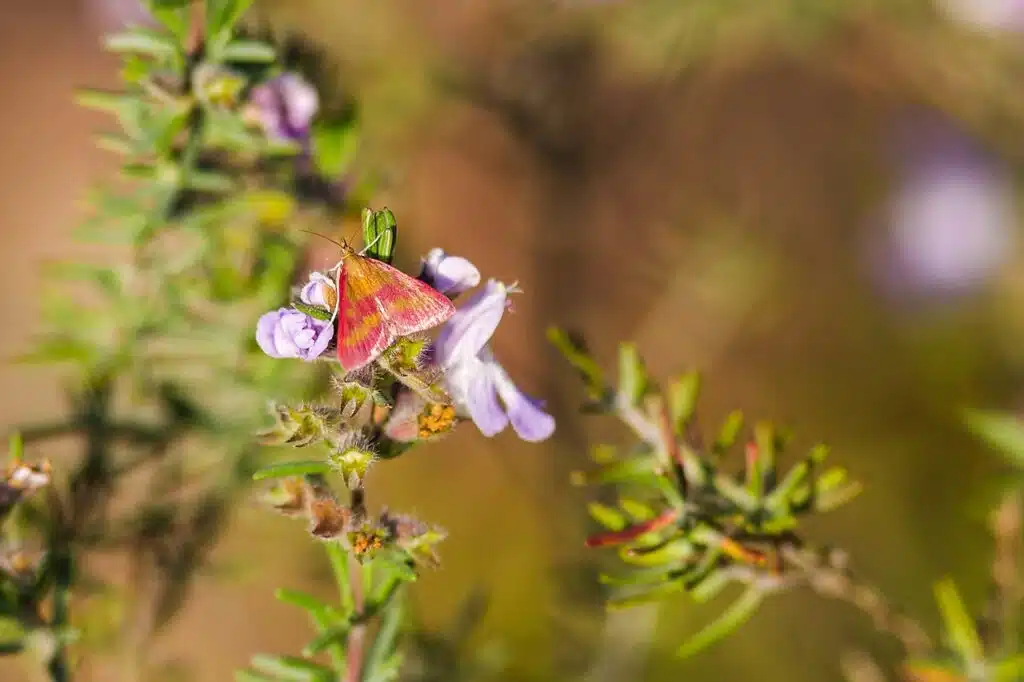
Its caterpillar has some of the most atypical hosts which include mint and rosemary.
The species may be spotted in gardens as rosemary is often grown at home. Insecticide use isn’t recommended for management techniques.
Soap and water can be used to spray rosemary and mint to keep its caterpillars away.
2. Elephant Hawkmoth
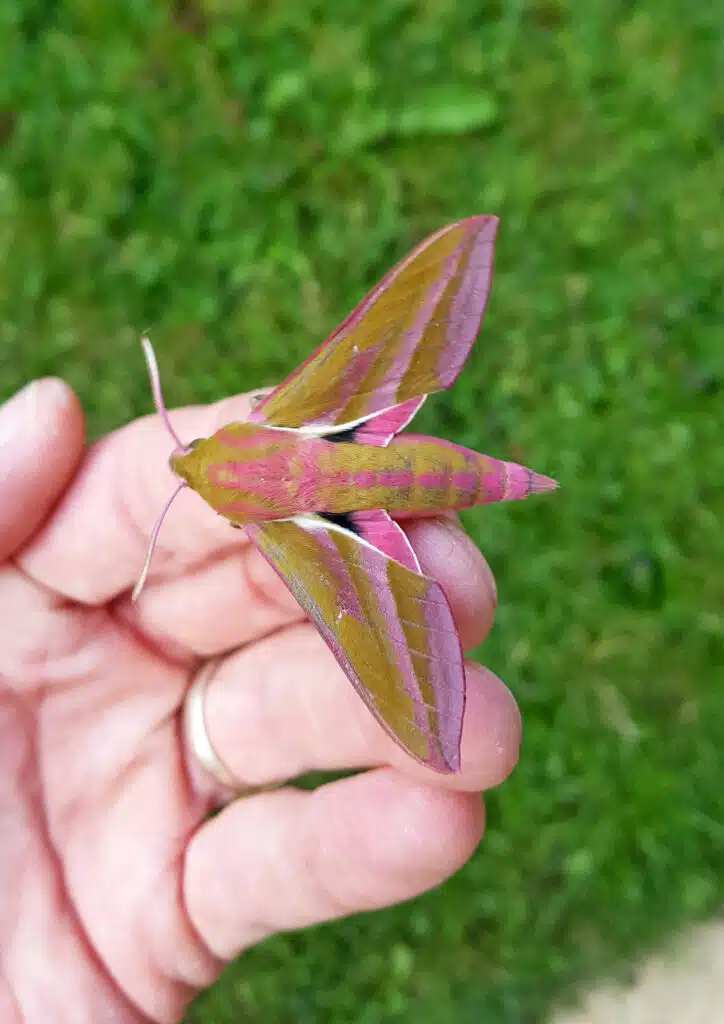
This type of hovering moth (Deilephila elpenor) is known for its pink to pink-purple coloring.
Its body and its wings are partially colored in purple while brown and white sections also contrast its body and wings.
The Elephant Hawkmoth is a species known for its excellent vision. Often seen hovering at night, Elephant Hawkmoths are known for their good vision.
Apart from their colored appearance, Elephant Moths also have good vision plus the ability to distinguish colors which allows them to easily find their hosts.
Spotted on various broad-leaf plants, the Elephant Hawkmoth caterpillar has a dark brown and black appearance without any color resemblance to the adults of the species.
3. Inornate Pyrausta Moth
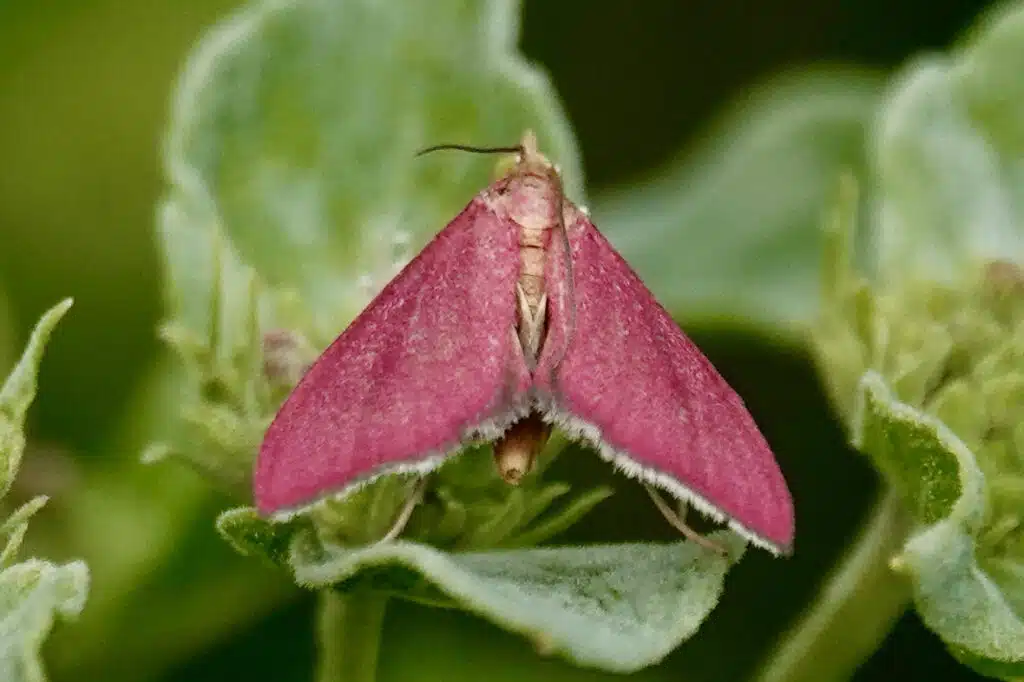
This type of moth (Pyrausta inornatalis) is marked by its colorful appearance.
Its forewings have a purple color which has often been compared to vine colors or the coloring of red wine.
Its hindwings have a brighter color, closer to pink while its body is white, tan, and brown with large black eyes.
This species is small, with a wingspan that may reach 13mm, at best.
Various species of sage are hosts for its caterpillars. The flowers of salvia plants bear some resemblance to the vivid color of the moth.
4. Common Crimson-and-gold Moth
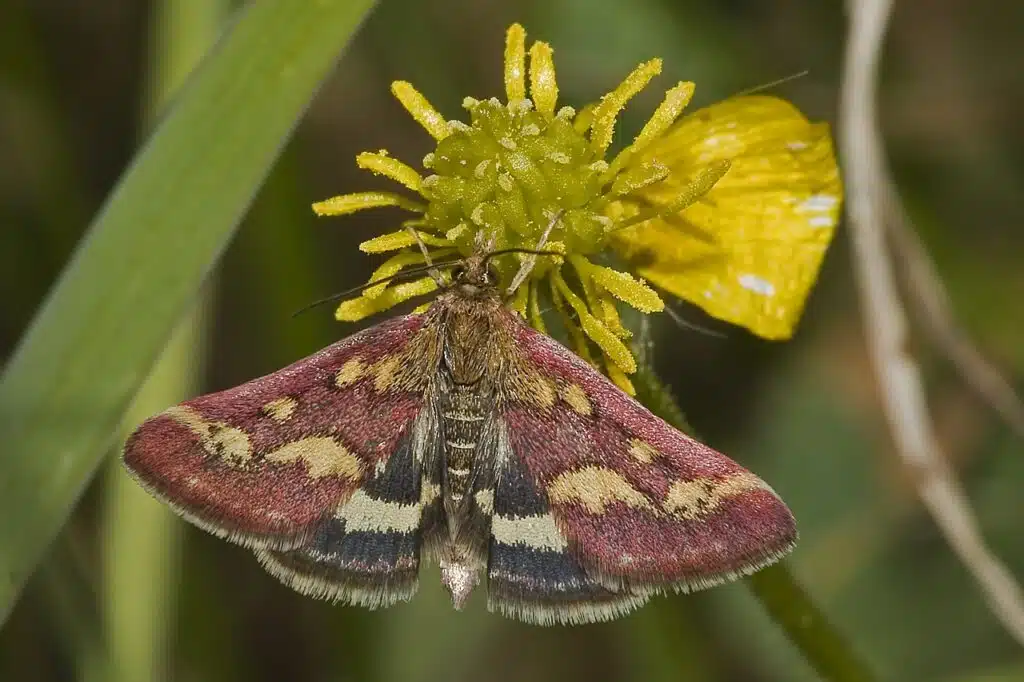
Pink to purple coloring is specific to the Common Crimson-and-gold Moth (Pyrausta purpuralis). Contrasting yellow to gold colors are seen on the wings of the species as well.
Purple, yellow, and brown sections are specific to this species. Some morphs are also dominated by brown.
You can identify the Common Crimson-and-gold Moth Caterpillars by their dark gray color.
A large species compared to North American moths, the Crimson-and-gold Moth grows to 20mm in wingspan.
It can be spotted in the summer and its season starts in May. Most locations of the species are tied to the growth of various types of wild mint, the host of its caterpillar.
5. Volupial Mint Moth
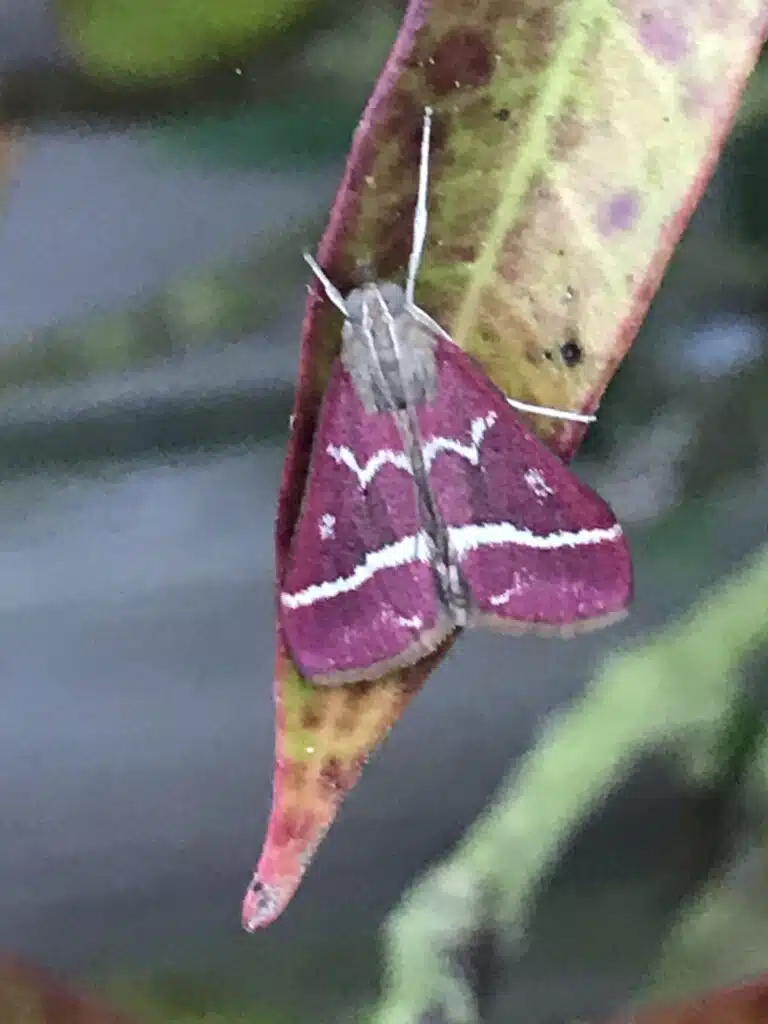
A small species of moth with dark purple coloring is the Volupial Mint Moth (Pyrausta volupialis).
This is a species often found around various types of wild and cultivated mint, as its name implies.
Dark purple coloring with faint slim yellow lines is specific to its forewings. Its body also shows a combination of purple and yellow colors.
While it likes mint, this is a moth that also adapts to chaparral habits, being a constant presence in California as a result.
Growing to a maximum wingspan of 10mm, Volupial Mint Moths can be spotted either on mint or other types of plants, mainly as those in the safe family.
6. Purple-barred Yellow
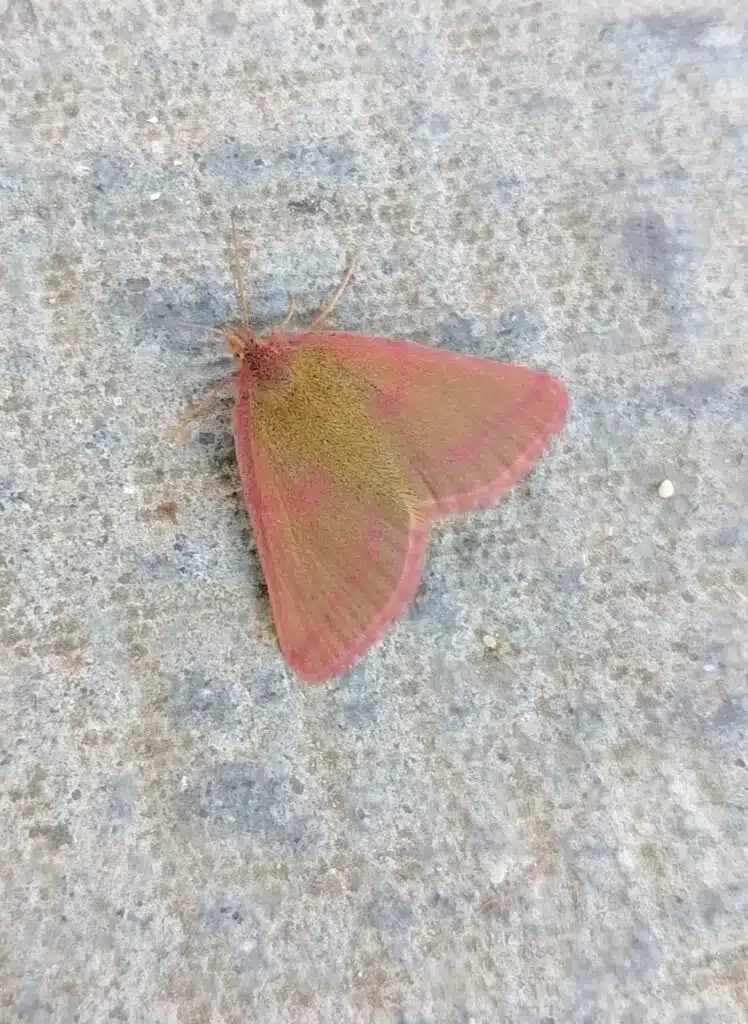
This species (Lythria purpuraria) takes on the coloring of dead leaves. Yellow-to-tan base color with purple stripes is specific to the species.
While it mimics dead leaves, the Purple-barred Yellow is a species that is mostly seen in the summer.
There are 2 broods of the moth each year. One appears early in the summer while the second generation makes its appearance in late summer, typically in July to August.
These moths are associated with various invasive plants in the numerous states they inhabit. Knotweed is one of the plants the caterpillar of the moth feeds on.
The species has a reduced presence outside Asia and Europe.
7. Raspberry Pyrausta Moth
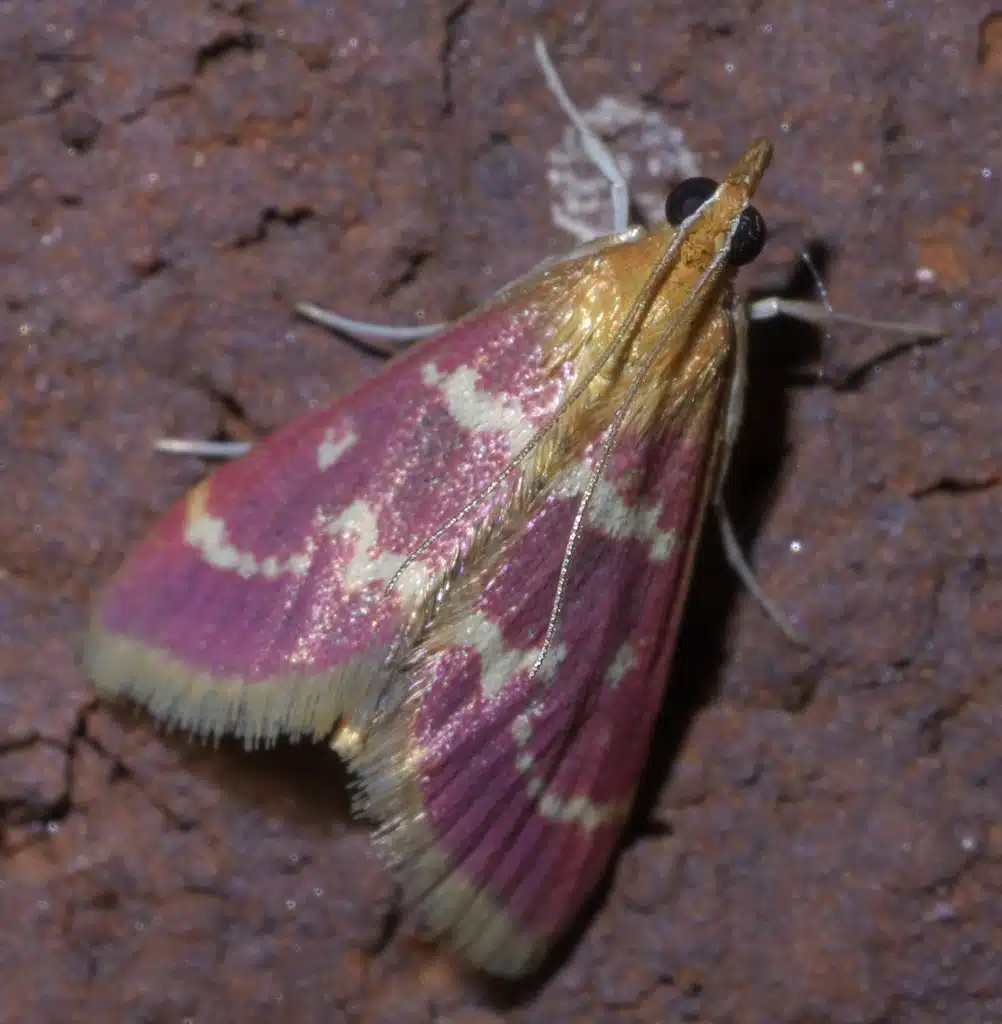
Grasslands across North America are where the Raspberry Pyrausta Moth (Pyrausta signatalis) is found in.
This is a species that can live in some of the aridest conditions, especially in areas with mint. It doesn’t feed on cultivated mint species.
Wild mint-family plants such as Bee balm are among the most common hosts of the species.
This is also a moth known to take on a dark purple color that resembles the light purple coloring of its mint hosts.
A large section of its forewings has a purple color with yellow lines and stripes.
This species also has tan to brown hindwings.
Its wingspan is long, compared to other moths of a similar color. It can reach a maximum wingspan of up to 20mm.
8. Oak Lantern
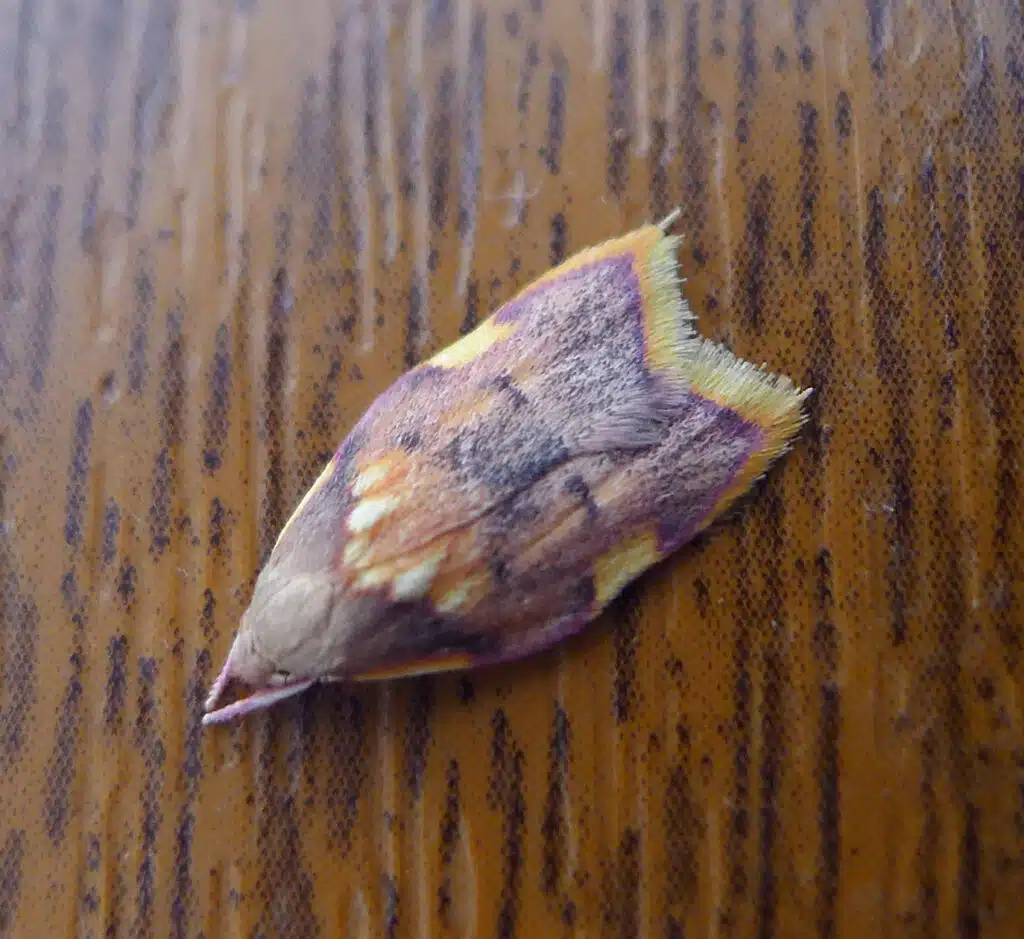
The host trees of the species (Carcina quercana) make it a widespread type of purple moth.
Oak is one of the most common hardwood trees in North America. The caterpillars of the species depend on their wide leaves for food.
The slight purple coloring is specific to the forewings of the moth. They have formed from purple, gray, black, and white sections.
Yellow margins are further specific to these species of moth.
The antennae of Oak Latern Moths are also partly yellow and partly purple. Unlike other species of purple moth, Oak Lantern Moth antennae are mostly purple.
9. Pink-striped Oakworm Moth
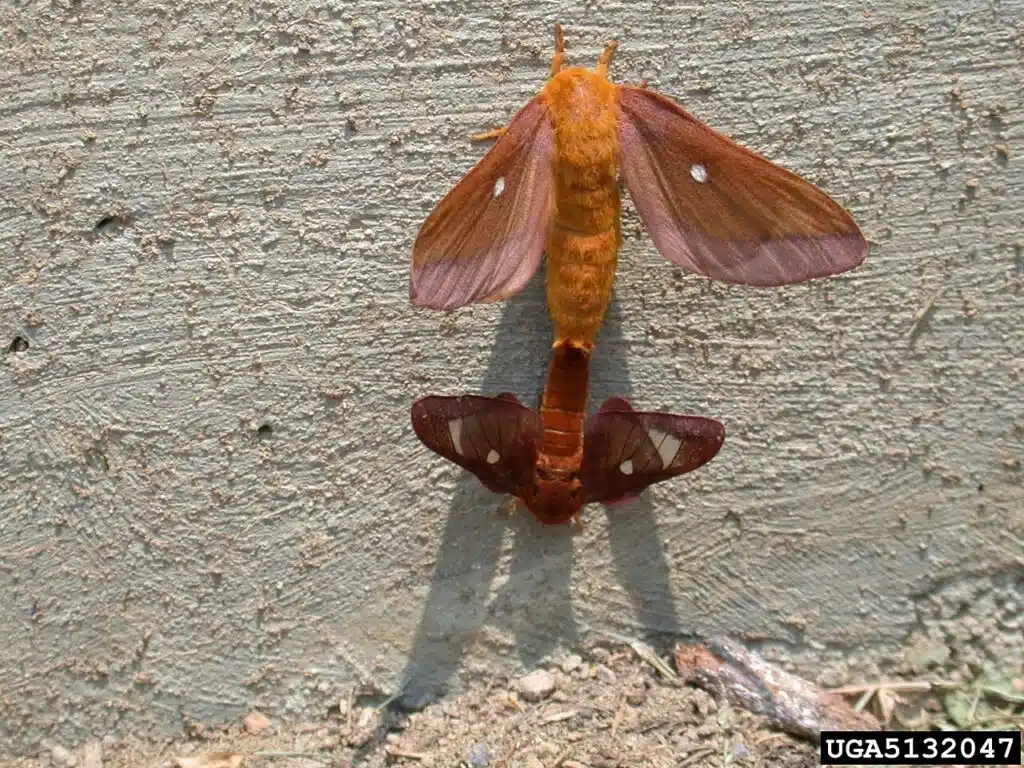
A dark purple color with red undertones is specific to the Pink-striped Oakworm Moth (Anisota virginiensis).
This is a species known for its dark appearance which is combined with the dark yellow to red coloring of its body, as opposed to its mostly purple wings.
On a larger scale, the colorful color of the moths helps quick identification as the Pink-striped Oakworm Moth is a considerable pest of oak and hardwood trees.
Invasions are rare but they can lead to complete tree defoliation.
This is a species that can be managed using prevention products such as those that contain toxic arsenic.
10. Southern Pink-striped Oakworm
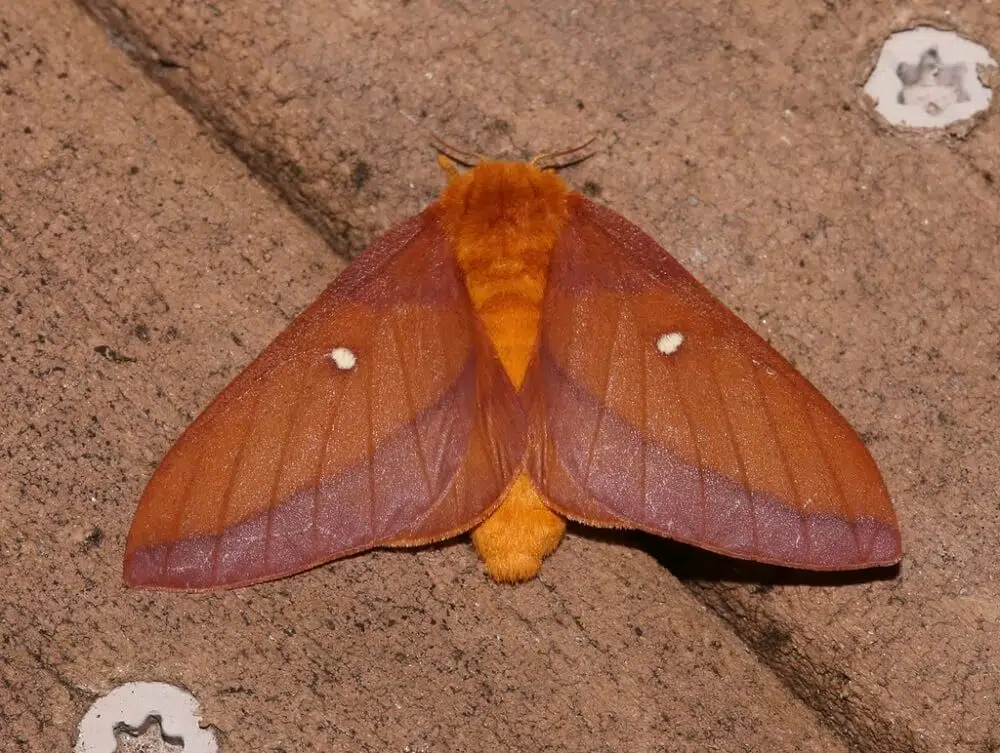
These types of moths (Anisota pellucida) live in Southern US territories where they represent one of the most problematic species when it comes to impact on woodlands.
A known pest, this moth has dark purple wings and a yellow to purple body coloring.
A purple-to-brown color is also specific to the caterpillar of the species which also shows contrasting black dots and black antennae.
A known defoliator, this species mostly impacts trees in its caterpillar stage. At this time, caterpillars feed on the soft leaves of oaks, essentially killing their host trees in case of serious invasions.
11. Western Sheep Moth
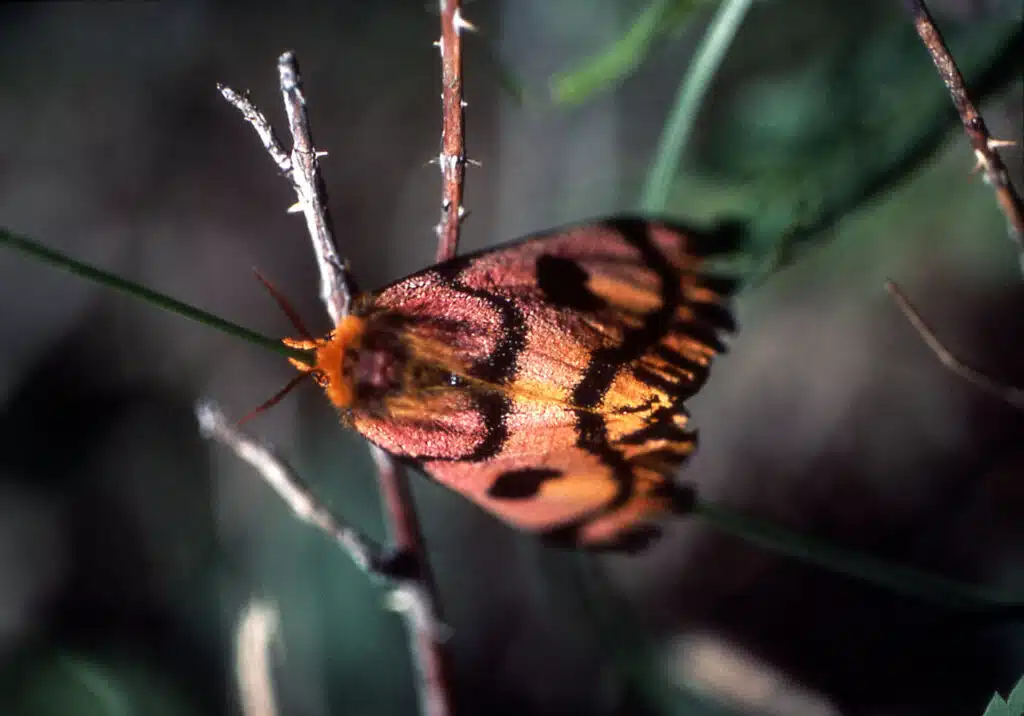
The purple coloring is specific to both the caterpillar and the emerged adult Western Sheep Moth (Hemileuca eglanterina).
Its caterpillar is mostly purple while the adult moth has purple, yellow, and black coloring.
This species is native to Western and Northwestern US territories.
Some of its host plants may impact its coloring as evolutionary adaptations. Lilac is one of the hosts of the Western Sheep Moth Caterpillar.
Once emerged as an adult, this species doesn’t eat.
Most moths of the species are seen in the summer, up to September.
12. Ernestine’s Moth
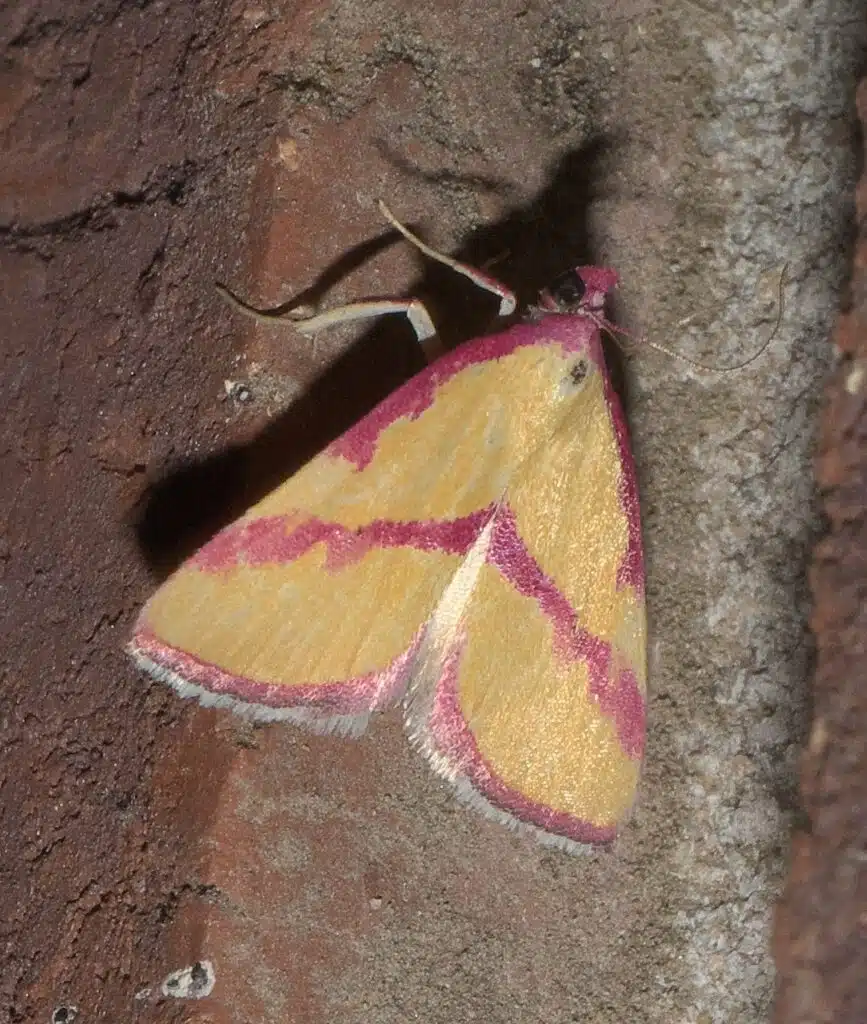
Ernesitne’s Moth (Phytometra ernestinana) is a species found in most Eastern and Southern US states.
The highest populations of the species are recorded in Florida and Texas.
The purple coloring is seen in the form of stripes along its dark yellow forewings. Its hindwings have a tan to brown color without any purple stripes while its body is yellow, brown, and purple.
The species is medium to large-sized compared to other vividly colored purple moths. It grows to a maximum wingspan of 18mm.
13. Mint-loving Pyrausta Moth
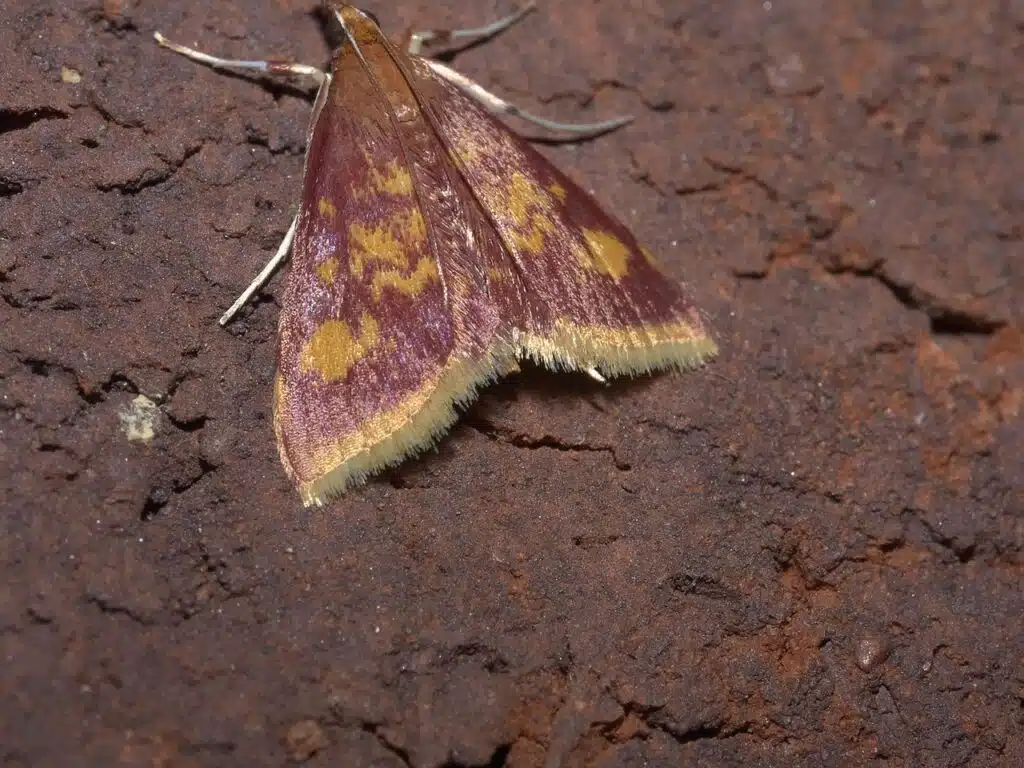
A small to medium-sized species, the Mint-loving Pyrausta Moth (Pyrausta acrionalis) is a species that gets its name from its mint host.
The caterpillars of the species feed on different types of mint.
The moth has a wingspan that may reach a maximum length of 18mm.
Purple coloring with red or pink undertones is specific to this species. The purple color of its yellow wings is mostly darker than on other species.
North American mentha species plants dictate the areas where the moth is present. The highest numbers of Mint-loving Pyrausta Moths are found in the Eastern US states.
14. Purple Fairy Moth
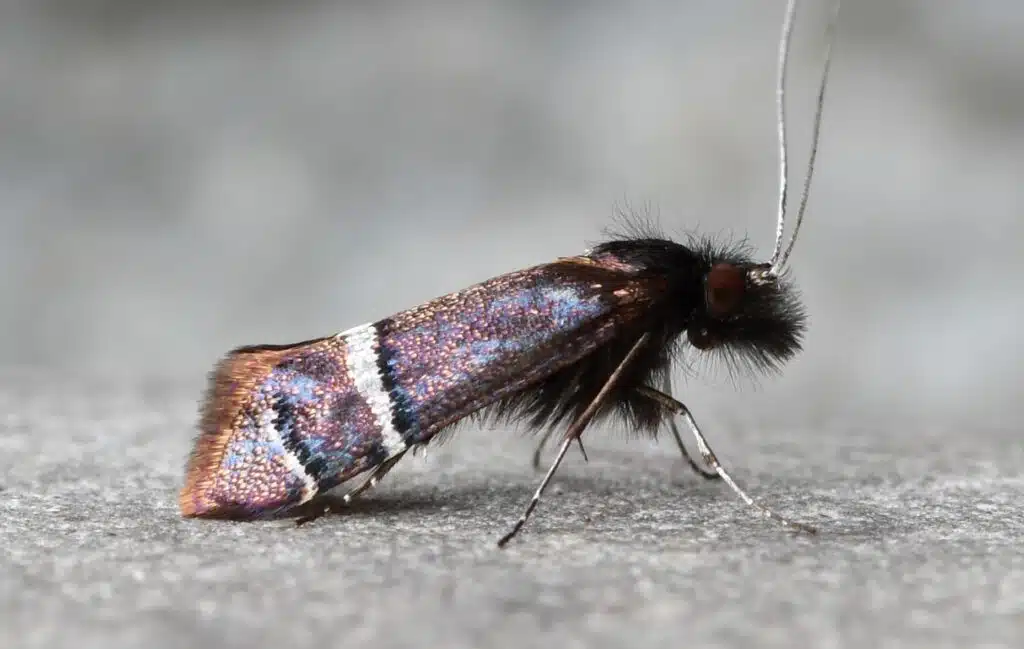
This species of moths (Adela purpurea) are mostly present in Canada and the Northern habitats of the United States.
It lives in riparian areas feeding on plants and trees next to rivers. Willow is one of the most common hosts of the Purple Fairy Moth Caterpillar.
The adult moth has dark purple coloring, with brown undertones and a wide white line crossing its forewings.
The body of the moth is brown while its head is black.
With time, the coloring of the species darkens which helps it evade possible predators.